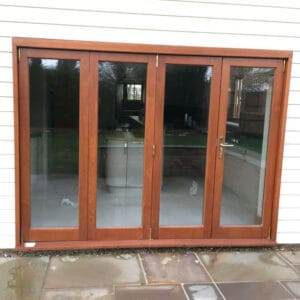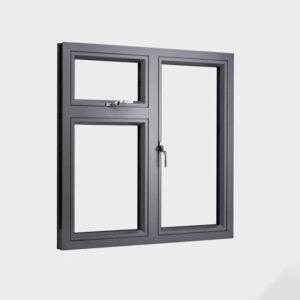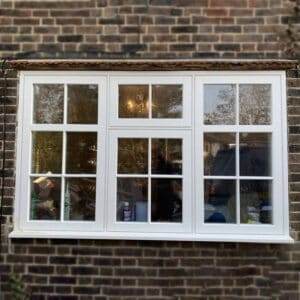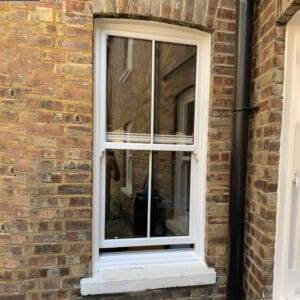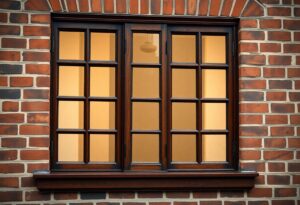Over time, leaky flat roof windows can lead to significant damage in your home, so ensuring a proper installation with effective waterproof seals and flashing details is necessary. In this blog post, you will learn the fundamental techniques to create a leak-free environment that protects your property from water ingress. We’ll guide you through the best practices and materials needed, enabling you to maintain the integrity and longevity of your flat roof windows while enhancing your space with natural light.
Understanding Flat Roof Windows
Before launching on the installation of flat roof windows, it’s vital to grasp their functionality and potential benefits. Unlike traditional roof windows, flat roof options are specifically designed to allow natural light to penetrate your space while maintaining a sleek appearance. They serve not only to illuminate interiors but also to enhance ventilation, making them a popular choice for modern architectural designs.
Benefits of Flat Roof Windows
For homeowners looking to maximise natural light while maintaining a minimalist aesthetic, flat roof windows offer a plethora of advantages. One significant benefit is their ability to create a sense of openness in a room, enhancing the overall atmosphere without the need for bulky structures. Moreover, these windows can improve energy efficiency, as they allow sunlight to warm interiors, potentially reducing your reliance on artificial heating in the colder months.
Common Materials Used
Understanding the materials commonly used for flat roof windows is vital for ensuring a long-lasting installation. Typically, you will encounter options such as polycarbonate, glass, and fibreglass. Each material comes with its unique properties, allowing you to select the best fit for your specific needs and climate conditions.
Indeed, the selection of materials not only impacts the aesthetic appeal of your flat roof windows but also influences their durability and insulation properties. Polycarbonate is lightweight and robust, making it suitable for areas prone to impact damage, while glass offers superior clarity and can be treated for enhanced thermal insulation. On the other hand, fibreglass is often favoured for its strength and resistance to the elements, ensuring your flat roof windows endure over time without compromising on performance. By considering these materials, you can ensure a leak-free installation that stands the test of time.
Importance of Waterproof Seals
Clearly, waterproof seals serve as the fundamental barrier between your flat roof windows and potential water ingress. An effective waterproof seal not only protects your property from leaks and moisture damage but also enhances the overall longevity of your roofing system. Without adequate seals, water can infiltrate the structure, leading to mould growth, structural damage, and costly repairs. Consequently, ensuring high-quality waterproof seals during installation becomes a top priority for safeguarding your investment.
Types of Waterproof Seals
On the market, you will find a variety of sealant types suitable for flat roof windows, each offering unique properties. Here’s a breakdown of some commonly used types:
| Sealant Type | Key Features |
| Silicone Sealants | Highly flexible and durable, ideal for areas with high temperature fluctuations. |
| Polyurethane Sealants | Excellent adhesion and weather resistance, perfect for long-lasting seals. |
| Acrylic Sealants | Water-based and easy to apply, providing a smooth finish for paintable surfaces. |
| Butyl Sealants | Strong adhesion to various materials, providing a waterproof barrier for roofing applications. |
| EPDM Sealants | High resistance to UV light and extreme weather, reducing wear and tear over time. |
Perceiving the right kind of sealant for your flat roof windows can be the difference between a leak-free environment and a potential nightmare of water damage.
Choosing the Right Sealant
Right from the outset, it is pivotal to select the appropriate sealant to achieve an optimal waterproof barrier. Factors to take into consideration include the specific application conditions, durability requirements, and the materials involved in your roofing installation. The ideal sealant should feature a strong adhesive quality while providing flexibility to accommodate movement due to temperature changes. It’s also advisable to check for a product with proven resistance to UV rays and mould growth, as these can significantly extend the lifespan of your waterproof seals.
A well-informed choice of sealant can contribute remarkably to the integrity of your roofing system. Opting for high-quality sealants will not only protect your windows from leaks but will also support the entire roof’s functionality. Investing time to investigate available options can provide long-term benefits, while avoiding cheaper alternatives might save you from serious issues in the future.
Flashing Techniques for Flat Roof Windows
Even if you have chosen an excellent flat roof window, the effectiveness of its installation largely depends on the employed flashing techniques. Proper flashing acts as a barrier against water intrusion, ensuring that rainwater is directed away from the window and does not seep into the building structure. Various flashing types cater to different scenarios, and understanding these can help you make informed decisions that enhance the durability and performance of your installation.
Types of Flashing
Below is a table outlining the different types of flashing commonly used for flat roof windows:
| Flashings | Description |
|---|---|
| Step Flashing | Composed of overlapping pieces that interlock, aiding drainage. |
| Continuous Flashing | Single piece that runs the length of the roof edge, offering seamless protection. |
| Counter Flashing | Installed on wall surfaces, overlapping other types to redirect water flow. |
| Pitch Pocket Flashing | Used for vertical pipes or ducts, providing a watertight seal around protrusions. |
| Flashing Tape | A self-adhesive option that simplifies application and seals joints effectively. |
This variety of flashing options enables you to tailor your installation based on specific roofing conditions and local regulations.
Installation Methods
Between selecting the right flashing type and ensuring quality installation, attention to detail is paramount for leak-free performance. The choice of installation method can significantly impact your flat roof window’s efficacy against water entry. You should consider options like mechanical fastening, adhesive applications, or using specialised sealants, each offering unique benefits depending on your roofing material and design.
In addition, it is vital to follow precise local building regulations and industry standards throughout the installation process. Adopting improper methods may not only jeopardise the integrity of your flashing but can also lead to severe future complications, including structural damage from moisture ingress. Therefore, always prioritise using high-quality materials alongside a meticulous approach to installation to ensure long-lasting performance of your flat roof window.

Common Installation Mistakes to Avoid
Despite the importance of correct installation practices, many property owners find themselves making avoidable errors that can lead to significant issues down the line. One of the most common mistakes is underestimating the importance of proper overlaps and seals in your flat roof window installation. If these areas are not correctly executed, it can result in water ingress, damaging both the window structure and your interior spaces. Taking the time to ensure that all seals are positioned accurately and that overlaps are sufficient will help ensure a long-lasting, leak-free installation.
Overlaps and Sealing Issues
With physical installation, it’s imperative to pay attention to the overlapping materials, as this is where water can easily pool and penetrate your roofing system. Incorrect overlaps can lead to a high risk of leakage, so be vigilant about following the manufacturer’s guidelines and using appropriate sealing materials. Using a high-quality sealant in conjunction with correctly aligned overlaps not only strengthens your installation but also enhances your roof’s overall durability against harsh weather conditions.
Inadequate Drainage Solutions
Drainage is another vital area where mistakes frequently occur. Failing to implement adequate drainage solutions can lead to water build-up on the roof surface, creating unnecessary pressure on your flat roof windows. This water accumulation not only risks leaks but can also compromise the integrity of your entire roofing system, leading to costly repairs and damage.
Consequently, ensuring that your flat roof features proper drainage channels and outlets is imperative for maintaining a leak-free installation. Incorporating elements such as tapered insulation to direct water flow, as well as ensuring that gutters and downpipes are correctly sized and positioned, can significantly reduce the risk of water retention. This proactive approach not only protects your windows but also prolongs the lifespan of your entire roofing system, keeping both your home and investment safe.

Maintenance Tips for Leak-Free Performance
Once again, ensuring your flat roof windows perform leak-free necessitates regular maintenance. This involves routine checks to detect any potential issues before they escalate. Key maintenance tips include:
- Inspecting the waterproof seals for wear and tear.
- Verifying the condition of the flashing around your windows.
- Clearing any debris that may impede drainage.
- Ensuring that gutters and downpipes are free from blockages.
Additionally, if you’re looking for comprehensive guidance on preventing leaks, take a look at this Skylight waterproofing important steps and maintenance page. Assume that proactive attention will significantly enhance the longevity of your installations.
Regular Inspection Techniques
At intervals throughout the year, you should conduct thorough inspections of your flat roof windows. Pay particular attention to the weatherproofing components, such as seals and flashing; they are the first line of defence against leaks. During these inspections, look for signs of damage or degradation, such as cracks or discolouration that may indicate the need for repairs.
In addition to visual checks, adopting a systematic inspection routine can further enhance your maintenance efforts. Consider using a checklist to ensure no detail is overlooked; this should include checking for misalignment, testing the integrity of the entire flashing system, and assessing the surrounding roof surface for ponding water or other issues that could compromise the seals.
Cleaning and Maintenance Practices
For your flat roof windows to function optimally, you must incorporate cleaning into your maintenance routine. Regularly removing leaves, dirt, and other debris from around your windows will help prevent blockage and ensure proper drainage, which is vital for maintaining the integrity of the waterproofing system. Ensure that you also clean the seals to remove any grime that could lead to deterioration over time.
Further to cleaning, it’s important to keep an eye on any biological growth such as moss or algae, which can retain moisture and weaken your seals. Using specialised cleaning solutions that are safe for your roof materials can aid in the removal of these growths without causing damage. Ensure you follow the manufacturer’s guidelines when applying any chemicals, as improper use can lead to further complications.
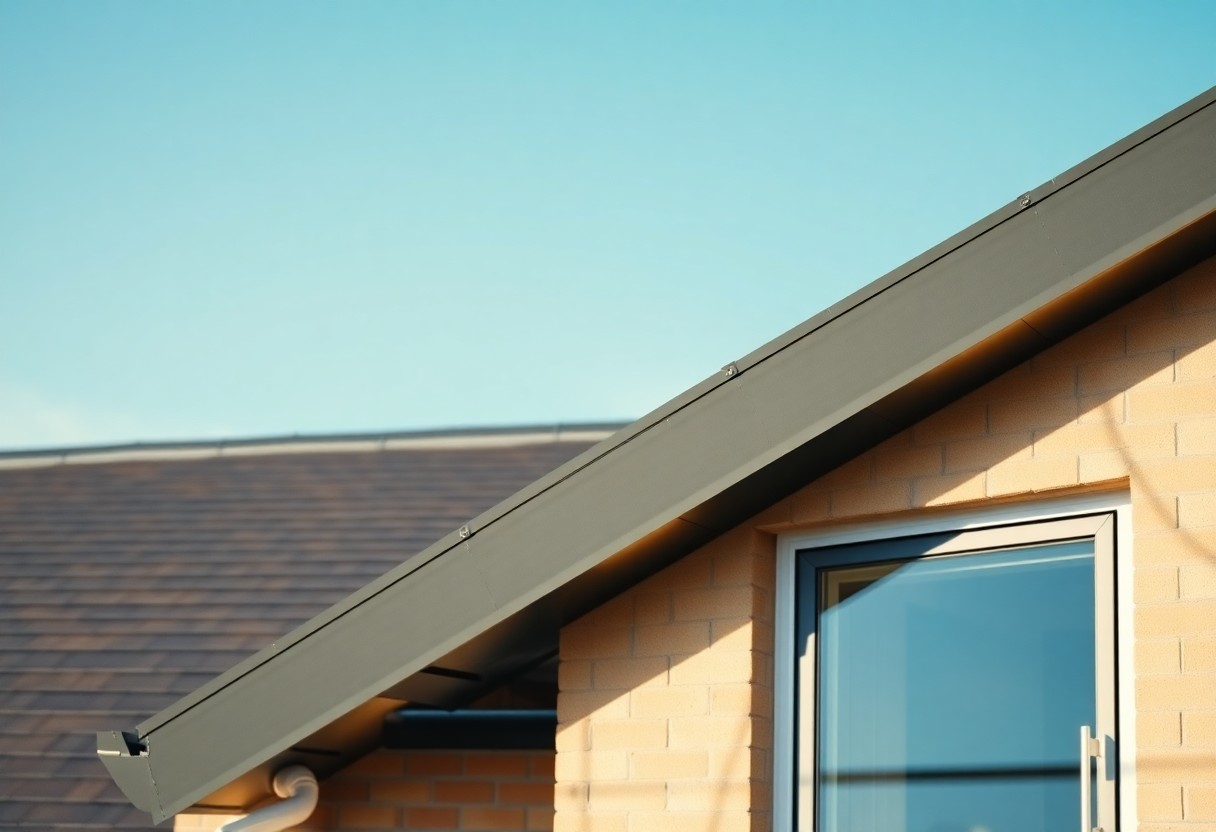
Troubleshooting Common Problems
Unlike traditional sloped roofs, flat roofs often experience unique issues that can lead to leaks if not addressed properly. Ensuring your flat roof windows are installed with the right waterproof seals and flashing details is vital to maintain a leak-free environment. If you do encounter problems, it’s advisable to consult resources that guarantee quality, such as Skylights: Weathertight, Guaranteed. This can provide you with the necessary insights to help troubleshoot and rectify any concerns before they escalate.
Identifying Sources of Leaks
By examining the areas around your flat roof windows, you can often identify the sources of leaks that may be affecting your home. Look for signs such as water stains on your ceiling, damp patches, or mould growth near the window frames. Pay attention to the condition of the seals and flashing as they play a significant role in directing water away from vulnerable areas. Wind-driven rain or pooling water can exacerbate these issues and lead to further damage if left unchecked.
Remedies and Repair Strategies
An effective way to manage leaks is to conduct regular maintenance checks on your roof and flashing details. This includes inspecting seals for any cracks or degradation, cleaning debris that may block drainage paths, and ensuring that the flashing is securely fitted. If you identify any weak points, repair them promptly to prevent further water ingress. Additionally, consider applying a sealant to areas with persistent issues or employing professional services for a thorough check-up to guarantee a comprehensive solution.
In addition, if leaks persist after conducting your inspections and repairs, it may be worth exploring the installation of advanced sealing systems or upgraded flashing solutions tailored for your specific roof type. These enhancements can significantly bolster your roof’s integrity and provide you with peace of mind against weather-related challenges, ensuring your flat roof windows remain safe and {strong>leak-proof
Summing up
Upon reflecting on the importance of waterproof seals and proper flashing details for flat roof windows, you might realise that their implementation is vital for ensuring a leak-free installation. A secure seal prevents water ingress, safeguarding your interior from potential damage. By investing time in the correct preparation and application of these components, you enhance the longevity and functionality of your flat roof windows, ultimately protecting your property and preserving its value.
Your approach to installation will determine the effectiveness of these waterproofing measures. By paying attention to detail and adhering to best practices, you can significantly reduce the risk of leaks, thereby maintaining a dry and comfortable indoor environment. Moreover, this proactive strategy not only alleviates future repair concerns but also instils confidence in the durability of your flat roof windows, establishing a standard for quality workmanship.
FAQ
Q: What are flat roof windows, and how do they differ from traditional windows?
A: Flat roof windows are specially designed windows that are installed on flat or low-pitched roofs. Unlike traditional windows, which are typically oriented vertically in walls, flat roof windows allow for light and ventilation from the roof level, providing an innovative way to enhance indoor spaces. They often come with a more streamlined design to blend seamlessly with the flat roof, promoting both aesthetics and functionality.
Q: How important are waterproof seals in flat roof window installations?
A: Waterproof seals are important in flat roof window installations as they prevent water ingress, which can lead to significant damage over time. These seals help create a barrier against rain, snow, and moisture that can compromise the integrity of the building structure. Properly installed seals will ensure a leak-free environment and enhance the longevity of the flat roof window.
Q: What is flashing, and why is it necessary for flat roof windows?
A: Flashing is a material that is installed around the edges of flat roof windows to direct water away from the window and prevent leaks. It acts as an additional protective barrier that ensures water flows away from the most vulnerable points of the installation. Properly fitted flashing is vital for maintaining the waterproof integrity of the installation, especially in areas prone to heavy rainfall or wind-driven moisture.
Q: What materials are typically used for waterproof seals and flashing?
A: Waterproof seals for flat roof windows are commonly made from high-quality rubber or silicone, which can withstand environmental changes and maintain their effectiveness over time. Flashing is usually constructed from materials such as aluminium, lead, or PVC, as these materials offer durability and resistance to corrosion. The choice of materials often depends on the specific requirements of the installation and the environmental conditions of the location.
Q: How can I determine if my flat roof window is properly installed to prevent leaks?
A: To determine if your flat roof window is properly installed, check for consistent sealing around the edges and ensure that the flashing is securely attached and angled to direct water away from the unit. Look for any visible gaps or signs of wear and tear, and monitor the interior of the building for any water stains or signs of dampness. If uncertain, it is advisable to consult a professional who can assess the installation’s integrity.
Q: What maintenance is required to ensure my flat roof windows remain leak-free?
A: Regular maintenance is important for ensuring flat roof windows remain leak-free. This includes periodically inspecting seals and flashing for any signs of damage or wear, such as cracks or deterioration. Clean the surfaces to remove debris that may obstruct proper drainage, and ensure that the surrounding roof area is free from blockages. Scheduling professional inspections every few years can also help catch potential issues before they lead to leaks.
Q: What should I do if I discover a leak around my flat roof window?
A: If you discover a leak around your flat roof window, it is important to address it promptly to prevent further damage. First, identify the source of the leak by looking for visible signs of moisture or damage. Clean any debris away and assess the seals and flashing for issues. If you are unable to locate the problem or it appears to be significant, it is advisable to contact a professional to evaluate the situation and carry out necessary repairs or re-sealing.


